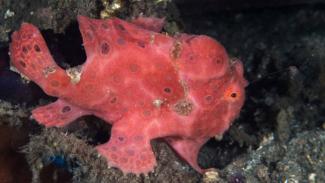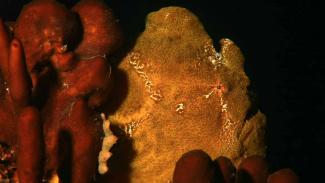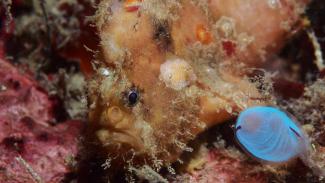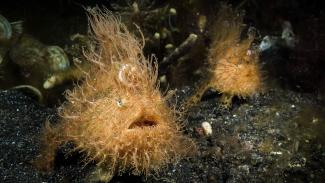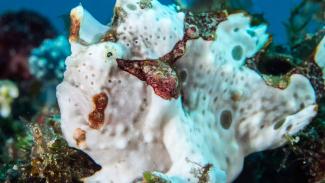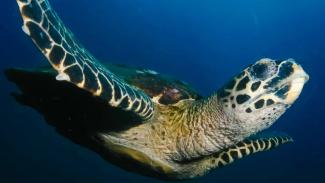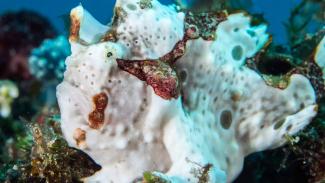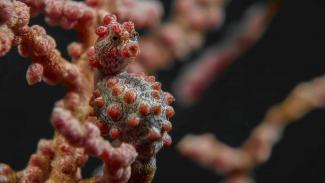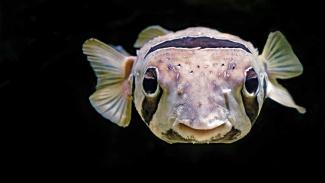Frogfish - Antennaridae
Frogfish are one of those weird & wonderful underwater inhabitants that divers simply love to discover.
In addition to their superb camouflage, their incredible variety of colour and texture make them fascinating to observe, while their behaviour is equally unusual.
When Frogfish bother to move at all, they tend to walk, rather than swim. They fish rather than activley hunt and their downturned mouths and unusual body shape add to a real sense of character.
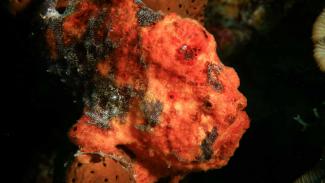
The fastest movement in the animal kingdom!
Family variety
Behaviour
Because of their unique feeding strategy and their amazing camouflage they rarely need to move to pursue prey or escape predators. When they do move then often walk on modified fins as legs. They can swim but rarely do so unless escaping danger or mating.
Reproduction
Diet
Defences
FACTFILE
SPECIES: 44
SIZE RANGE: 4-40 cm
DISTRIBUTION:
Global. Widespread throughout region.
HABITAT:
Coastal areas with plenty of algal growth & sponges. Wrecks, jetties and artificial reefs.
THREATS:
Few
Identification tips
-
Frogfish have a lure that entices their prey close enough to be caught in their lightening fast jaws.
-
A large, downturned mouth is characteristic of the frogfish family. If you are lucky, you might even see them yawn!
-
A Frogfish's skin pattern often adapts to blend in seamlessly with their surroundings. Blotches, warts and patchy growths add the finishing touches to their camouflage.
-
Frogfish have modified fins that look more like legs. Although they can swim, they often choose to walk instead.
Popular species
Frogfish are a magical find on any dive. Discover some of the most popular species encountered by scuba divers.
Giant Frogfish
(Antennarius commersoni)
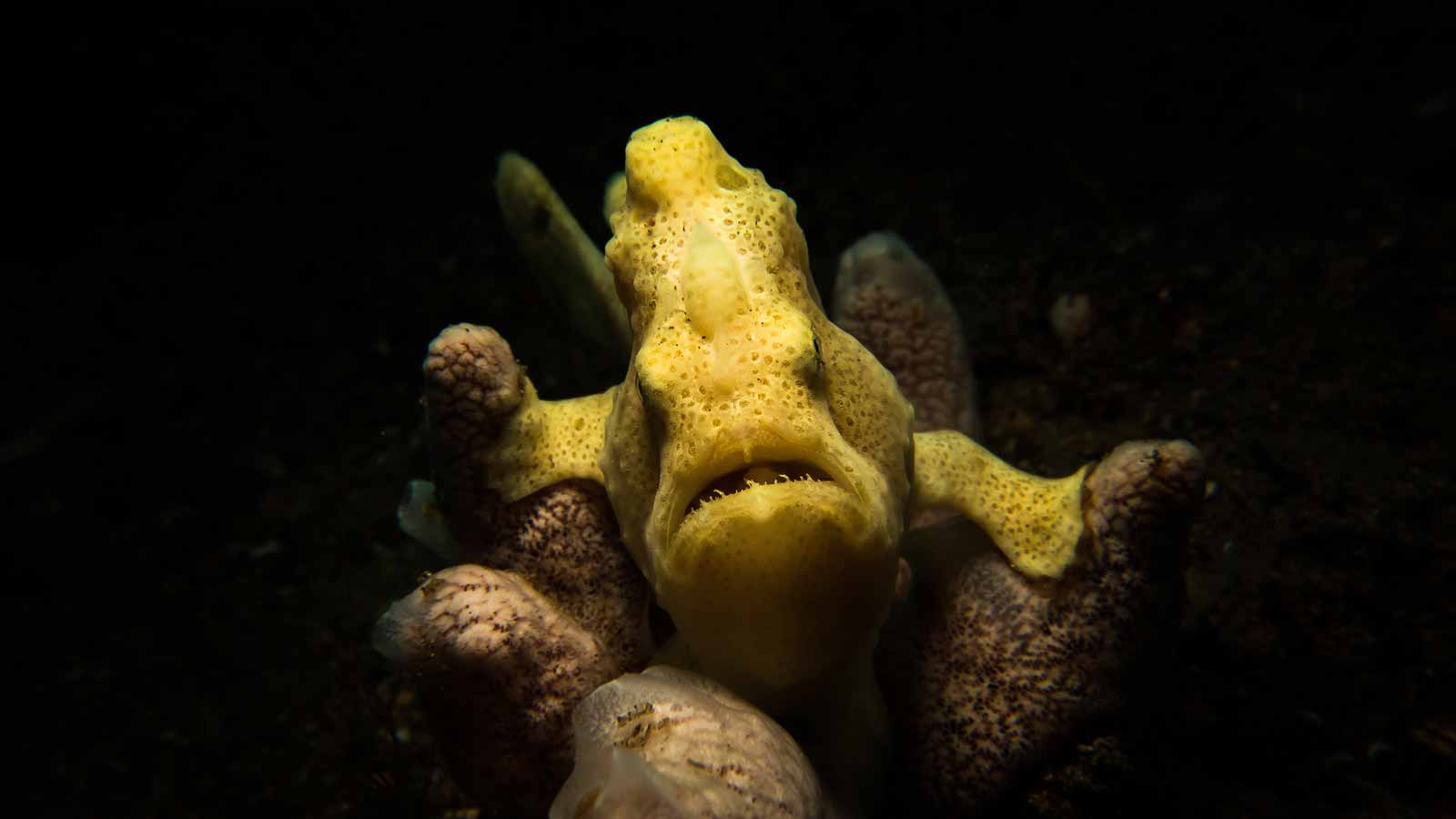
The Giant Frogfish it the largest in the family and can grow up to 50cm. They can vary significantly in appearance to blend in to their habitat and surroundings, but often have growths and warts to help with camouflage. Identified best by their large size, they are often found perching on the top of sponges or high above the bottom on wrecks or artificial reefs.
Clown Frogfish
(Antennarius maculatus)
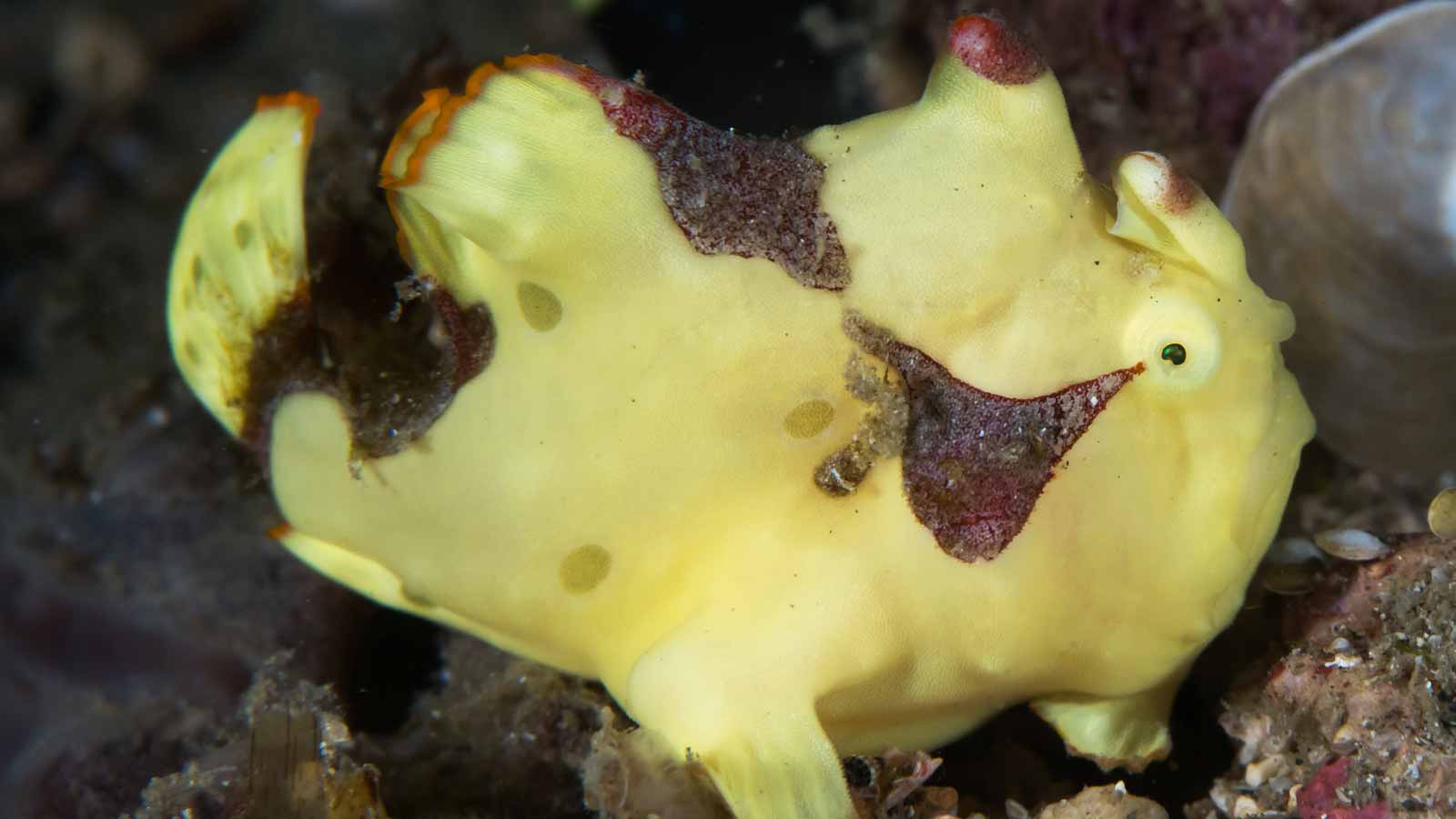
With their colourful designs Clown Frogfish are one of the easiest frogfish to identify. Usually yellow or white with black markings these little frogfish can be some of the most striking in their family. Juveniles also have incredible and easily identifiable markings. They are sometimes known as the Warty Frogfish.
Painted Frogfish
(Antennarius pictus)
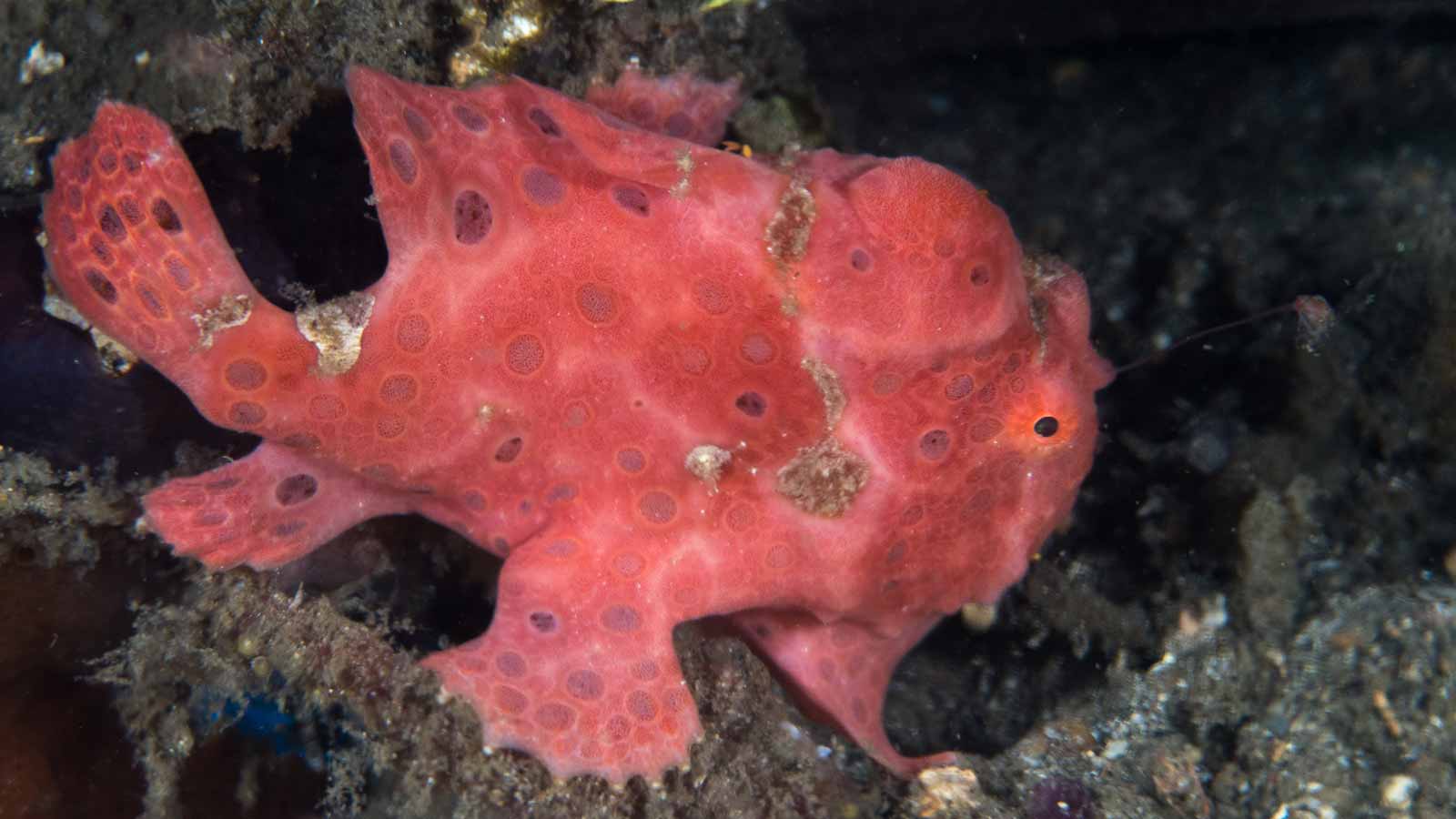
This species comes in a wide variety of colours and markings, including pink, red, black, white & yellow. Some have smooth skin with markings that mimic the pores of the sponges they live in. Others have growths and warts to mimic algae in their environment. Juveniles also have incredible and easily identifiable markings, often mimicking poinsonous Flatworms.



